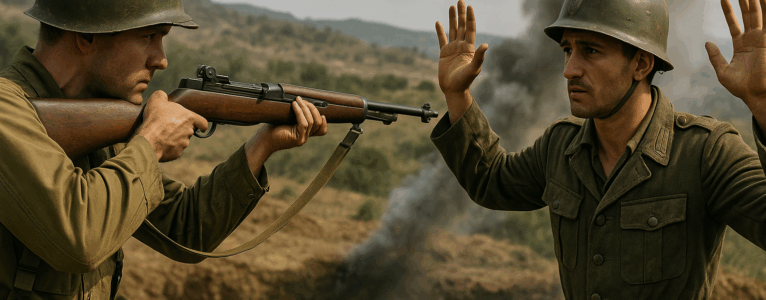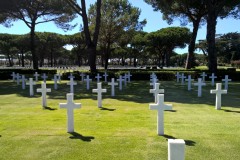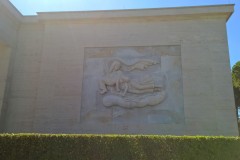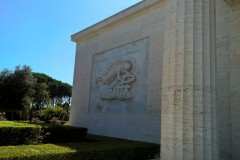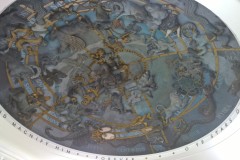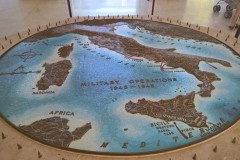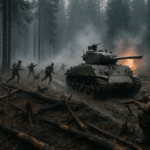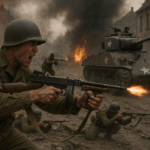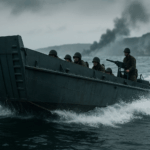In the heat of Sicily’s summer in 1943, a young American GI with an Italian surname crouched in an olive grove, bullets snapping through the air. Somewhere in the hills above, retreating Axis soldiers, some of them Italian conscripts, were preparing their next line of defense. That GI could’ve been named Mancini, Russo, or DeLuca. He could’ve been fighting men with the same last names. And that was the strange, often heartbreaking reality for many Italians during World War II.
World War II wasn’t just a global conflict, it was a deeply personal war for millions of Italians and Italian-Americans, caught between blood ties and battle lines, dictators and democracy. Some were fighting under Mussolini’s black-shirted regime. Others were donning U.S. Army khaki, speaking a mix of English and Sicilian slang. Their stories are full of paradox, pain, and quiet courage.
Before the Storm: Italians in America
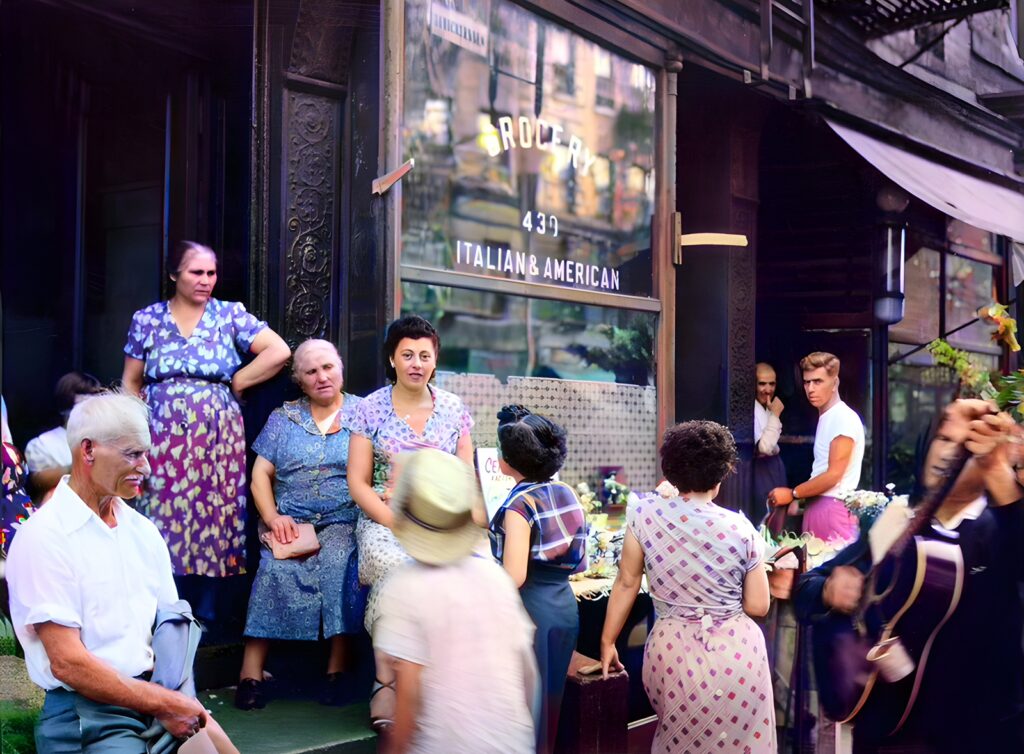
By the time World War II rolled around, Italian immigration to the United States had already reshaped American cities. Between 1880 and 1920, over four million Italians arrived on U.S. shores, fleeing poverty, political instability, and overpopulation. They settled in tight-knit enclaves, Little Italy in New York, North Beach in San Francisco, and neighborhoods in Boston, Chicago, and beyond.
Life wasn’t easy. Italians faced prejudice, low wages, and accusations of being un-American. But by the late 1930s, many second-generation Italian-Americans were climbing the social ladder, becoming tradesmen, cops, shopkeepers, and citizens. And when war came, they answered the call.
Fighting for America: Italian-Americans in WWI
An estimated 500,000 Italian-Americans served in the U.S. Armed Forces during World War II. That’s half a million sons and grandsons of immigrants who stormed beaches, manned tanks, flew bombers, and fought from North Africa to Normandy.
Some, like Sergeant John Basilone, became legends. The New Jersey-born son of Italian immigrants earned the Medal of Honor for heroics at Guadalcanal and later died in action on Iwo Jima. Others worked behind the scenes, translators, interrogators, guides, especially when the Allies invaded Italy.
For many, it was a deeply emotional experience. Imagine landing in Naples in 1943, surrounded by familiar dialects and customs, but there to wage war. Some GIs helped liberate their parents’ hometowns. Others buried cousins they’d never met.
Enemy Aliens: Suspicion and Internment

Despite their service, Italian immigrants, particularly those who hadn’t yet become U.S. citizens, faced suspicion after Pearl Harbor. The government designated over 600,000 Italian-born residents as “enemy aliens.”
Restrictions followed:
- Curfews
- Travel limitations
- Seizure of radios, cameras, and even fishing boats
- Internment of around 1,500 Italian immigrants (far fewer than Japanese-Americans, but still significant)
Public pressure and military needs soon changed that. By October 1942, President Roosevelt lifted many of the restrictions, and prominent Italian-Americans were recruited to help rally support for the war effort.
Fighting for Mussolini: Italians in the Axis

Back in Europe, millions of Italians were fighting a very different war.
Italy, under Benito Mussolini, joined Nazi Germany as part of the Axis powers. Italian troops fought in:
- North Africa (alongside Rommel)
- Greece and the Balkans
- France (during the 1940 invasion)
- The Eastern Front (in Russia, where thousands froze or starved)
But morale was often rock-bottom. Equipment was poor, leadership lacked vision, and many Italian soldiers felt little loyalty to Fascism. They were conscripts, not zealots. And when things started to go south, the cracks split wide open.
The Great Split: Civil War in Italy
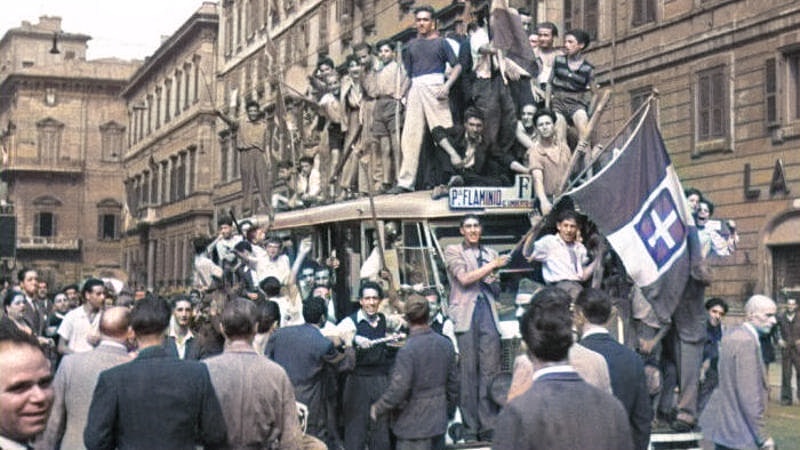
On September 8, 1943, Italy signed an armistice with the Allies. The result? Chaos.
Germany immediately occupied the north, rescuing Mussolini and propping him up as the puppet ruler of the Italian Social Republic (RSI). Meanwhile, in the south, the new Italian government joined the Allies as co-belligerents.
This meant that:
- Italians were fighting on both sides of the war.
- Italian partisans began a brutal resistance campaign against the Nazis and RSI forces.
- Villages became battlefields. Families were divided. Brothers, quite literally, fought brothers.
It was a civil war within a world war. And it tore the country apart.
The Legacy: Memory and Mourning

When the guns finally fell silent in 1945, Italy was a shattered nation. Its cities bombed, its economy crippled, and its politics deeply divided.
In the U.S., Italian-American veterans came home to build lives, some kept quiet about the strange duality of fighting Italians in the land of their ancestors. Others returned to Italy with humanitarian missions or to reconnect with family.
In Italy, the postwar years were marked by selective memory. The Resistance was glorified (and rightfully so), but many who served under Mussolini remained silent, their roles unspoken, their graves often unvisited.
Even today, Italy’s war cemeteries are split, some for partisans, some for RSI troops, rarely together.
Conclusion: The War Within

The story of Italians in World War II is not simple. It’s not just about Axis and Allies. It’s about identity, migration, guilt, and survival. It’s about a young man born in Brooklyn fighting through the mountains of Abruzzo. It’s about a conscript in the Regio Esercito wondering why he’s dying in the Russian snow. And it’s about the strange pain of loving two countries that went to war with each other.
In the end, maybe that GI in Sicily never found out if he was shooting at a cousin. Maybe he did, and prayed he missed. That’s the kind of war this was. And it deserves to be remembered in full.
Suggested Reading & Viewing:
- 📖 The Italians in America by Luciano J. Iorizzo
- 📖 Bitter Victory: The Battle for Sicily, 1943 by Carlo D’Este
- 🎥 Rome, Open City (1945) – Italian neorealist classic set during the Resistance
- 🎥 Paisan (1946) – Explores the relationship between American soldiers and Italians during the campaign
The Sicily-Rome American Cemetery
At the heart of the Sicily-Rome American Cemetery, beneath cypress trees and marble stars, stands a quiet tribute not just to sacrifice, but to division. One statue, solemn and strong, captures two brothers: one clad in American uniform, the other in the garb of an Italian conscript. Their faces are not angry, only weary. One reaches out, the other hesitates. They do not embrace.
Here, among rows of white crosses near Nettuno, the message is clear: in World War II, loyalty was not always to flag or nation, it was to family, to survival, to what one could bear. This statue speaks to those who landed as liberators, and to those who defended the soil of their fathers. It remembers that sometimes, war does not choose enemies. Sometimes, enemies are born of the same blood.

